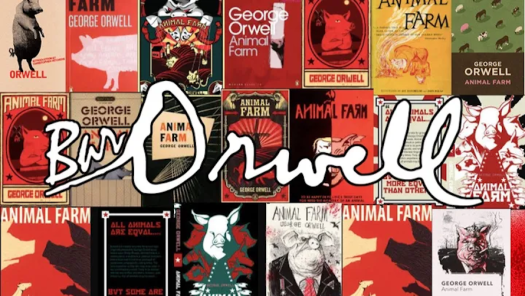For Hamilton, ON-based songwriter Daniel Monkman, Zoon is more than just a new alias — it's a musical and spiritual rebirth.
This new phase of his career is the culmination of a fraught decade in which he struggled with addiction, stepped away from a budding career with his Winnipeg-based project Blisters, and eventually returned with a sublime psych sound and a newfound connection with his Ojibwe heritage. He cheekily calls his music "moccasin-gaze," in reference to the way he mixes Indigenous influences with classic My Bloody Valentine-style walls of distortion. In every sense, he's in a very different place than he was in the early 2010s.
"In those earlier days, I didn't want to be identified as Indigenous shoegazer. I just kind of wanted the music to speak for itself," Monkman remembers during a Zoom call with Exclaim! "No one ever came up to me and asked me about 'moccasin-gaze.' At that time, I hadn't even called it that. I didn't identify with my Ojibwe heritage until I was a young adult."
As Blisters, Monkman had been building some buzz at local radio stations and inked a deal with Woven Records. But as he geared up for what was supposed to be his breakout album, everything fell apart. The label ran out of money, and Monkman's addictions interfered with his music.
"I had to take a moral inventory of myself," he says. "I just couldn't be influencing Indigenous youth or my own peers or people around me if I was showing up under the influence all the time to recording sessions or even live shows."
By 2012, Monkman had left Winnipeg, bouncing from city to city across Canada before ending up at a rehabilitation centre in Vancouver. After being uninspired by Christian meetings and struggling to heal his spiritual side, he eventually learned about the Teachings of the Seven Grandfathers of his Ojibwe culture. "I was like, 'Oh, our people have our own healing ways? Why didn't I learn about this earlier?'" he recalls with a wry smile. "That's where a lot of the true healing happened, and then that's when I came to the Courage section, Zoongide'ewin."
During recovery, he confronted his traumas through intense exposure therapy, and he began writing down his reflections as poems and song ideas — not because he was actively playing music, but simply because that was how he best knew to structure his own thoughts. When he eventually did pick up music again, he initially envisioned it as a downcast folk project à la Nick Drake or Beck's Sea Change, until he fell in love with his amp's roaring distortion sound.
He recorded on the cheap with an eight-track recorder, using loop pedal trickery to weave the dense tapestries of noise that make up this year's debut album, Bleached Wavves. Classic shoegaze sounds emerge on "Vibrant Colours" and "Landscapes," which blend woozy glide guitar with brisk drum loops akin to MBV's Loveless; elsewhere, Monkman breaks the mould with chanting refrains of "Yahweh" on the hypnotic "Was & Always Will Be," and he teams up with spoken word artist Wolf B to address colonial pain on the aching soundscape "Infinite Horizons."
Even the title is a clever subversion of shoegaze expectations, since Monkman admits that he's barely familiar with the California punk bands Bleached and Wavves. Rather, Bleached Wavves is a highly personal allusion to his past: Bleached refers to an incident that happened to a family member (something that Monkman doesn't elaborate on), while Wavves evokes his experiences in recovery.
"My first three months there was like a living hell," he says of rehabilitation. "It was like waves of emotion. Waves of happiness, waves of sadness. So for me, the Wavves part represents just the human experience of just daily life. You never know when you might get the phone call that someone has passed away, or you might get the phone call that you won the lottery, and you just never know."
Monkman originally intended for Bleached Wavves to come out under the artist name Bloom, but after a friend told him that it sounded too much like a flower shop, Monkman dubbed the project Zoon — a reference to Zoongide'ewin, the transformative teaching that helped him so much during recovery. It's the perfect name for an artist who has begun to embrace his role within an emerging community of Indigenous artists.
"I respect all Indigenous artists who are doing their thing," says Monkman. "I respect nêhiyawak for what they're doing, and same with WHOOP-Szo. Those are two heavy rock bands who kind of gave me inspiration to start classifying myself as a First Nations artist."
This new phase of his career is the culmination of a fraught decade in which he struggled with addiction, stepped away from a budding career with his Winnipeg-based project Blisters, and eventually returned with a sublime psych sound and a newfound connection with his Ojibwe heritage. He cheekily calls his music "moccasin-gaze," in reference to the way he mixes Indigenous influences with classic My Bloody Valentine-style walls of distortion. In every sense, he's in a very different place than he was in the early 2010s.
"In those earlier days, I didn't want to be identified as Indigenous shoegazer. I just kind of wanted the music to speak for itself," Monkman remembers during a Zoom call with Exclaim! "No one ever came up to me and asked me about 'moccasin-gaze.' At that time, I hadn't even called it that. I didn't identify with my Ojibwe heritage until I was a young adult."
As Blisters, Monkman had been building some buzz at local radio stations and inked a deal with Woven Records. But as he geared up for what was supposed to be his breakout album, everything fell apart. The label ran out of money, and Monkman's addictions interfered with his music.
"I had to take a moral inventory of myself," he says. "I just couldn't be influencing Indigenous youth or my own peers or people around me if I was showing up under the influence all the time to recording sessions or even live shows."
By 2012, Monkman had left Winnipeg, bouncing from city to city across Canada before ending up at a rehabilitation centre in Vancouver. After being uninspired by Christian meetings and struggling to heal his spiritual side, he eventually learned about the Teachings of the Seven Grandfathers of his Ojibwe culture. "I was like, 'Oh, our people have our own healing ways? Why didn't I learn about this earlier?'" he recalls with a wry smile. "That's where a lot of the true healing happened, and then that's when I came to the Courage section, Zoongide'ewin."
During recovery, he confronted his traumas through intense exposure therapy, and he began writing down his reflections as poems and song ideas — not because he was actively playing music, but simply because that was how he best knew to structure his own thoughts. When he eventually did pick up music again, he initially envisioned it as a downcast folk project à la Nick Drake or Beck's Sea Change, until he fell in love with his amp's roaring distortion sound.
He recorded on the cheap with an eight-track recorder, using loop pedal trickery to weave the dense tapestries of noise that make up this year's debut album, Bleached Wavves. Classic shoegaze sounds emerge on "Vibrant Colours" and "Landscapes," which blend woozy glide guitar with brisk drum loops akin to MBV's Loveless; elsewhere, Monkman breaks the mould with chanting refrains of "Yahweh" on the hypnotic "Was & Always Will Be," and he teams up with spoken word artist Wolf B to address colonial pain on the aching soundscape "Infinite Horizons."
Even the title is a clever subversion of shoegaze expectations, since Monkman admits that he's barely familiar with the California punk bands Bleached and Wavves. Rather, Bleached Wavves is a highly personal allusion to his past: Bleached refers to an incident that happened to a family member (something that Monkman doesn't elaborate on), while Wavves evokes his experiences in recovery.
"My first three months there was like a living hell," he says of rehabilitation. "It was like waves of emotion. Waves of happiness, waves of sadness. So for me, the Wavves part represents just the human experience of just daily life. You never know when you might get the phone call that someone has passed away, or you might get the phone call that you won the lottery, and you just never know."
Monkman originally intended for Bleached Wavves to come out under the artist name Bloom, but after a friend told him that it sounded too much like a flower shop, Monkman dubbed the project Zoon — a reference to Zoongide'ewin, the transformative teaching that helped him so much during recovery. It's the perfect name for an artist who has begun to embrace his role within an emerging community of Indigenous artists.
"I respect all Indigenous artists who are doing their thing," says Monkman. "I respect nêhiyawak for what they're doing, and same with WHOOP-Szo. Those are two heavy rock bands who kind of gave me inspiration to start classifying myself as a First Nations artist."




